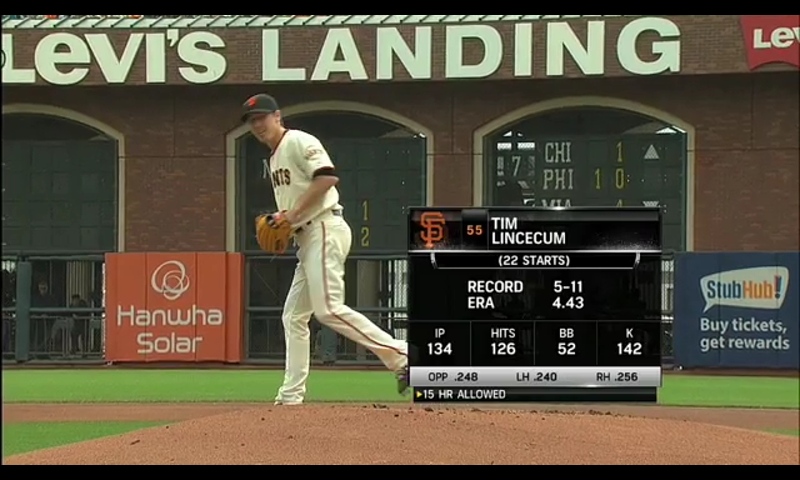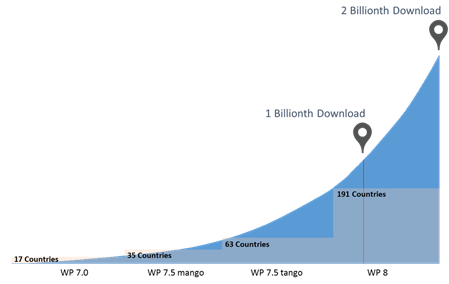Take the headline numbers. In the last seven days 1,186 new apps have been added to the AAWP App Directory, increasing the chance of someone finding a useful app for their Windows Phone device.
Not all apps are equal though, and the reason why I think Windows Phone has had a particularly good fortnight comes down to some key apps that have been released. Yes the numbers and the statistics can be a good yardstick to measure the performance of the store, but individual apps matter just as much as a tidal wave of code. At a personal level, if there is one app you are waiting on, and it suddenly appears, Windows Phone overnight transforms into a contender.
Take some of the big names now on the platform; Major League Baseball brought a key sporting information app to Windows Phone with their popular At Bat 13 app; InstaWeatherPro made the jump allowing users to share social pictures of the local weather with an image; and OgglPro was the first of four key social media tools to become available in the Windows Phone store (Vine, Flipboard, and Path are on their way). We've also had updates in third party apps that give access to Instagram and Pinterest, the Bing App Suite of news, weather, finance, and sport apps, Skype, Yelp!, and more.

To some people, baseball is life, so it has to be on Windows Phone.
None of these apps are "killer" in the traditional sense that they alone would sell a Windows Phone handset to someone in a store - the days of a Lotus 1-2-3 single handedly selling a home computer system (in this case the early IBM PC computers) are not going to happen in the modern smartphone market - there are magnitudes more users, all with varying needs, wants, and desires.
Just as smartphones are different to home consoles, so the attractiveness of apps on a mobile device are different to a desk-bound computer. The Windows Phone apps mentioned above play their part in the app store of the platform, but with more subtlety than the early eighties.


Yelp! and Hispstamatic's Oggle Pro
Every one of these "name" apps reduces the barrier for someone to buy a phone. As more apps are released, people who use a "key" app on another platform (such as At Bat, or InstaWeather) have one less reason to reject a Windows Phone device when they come to buy a new handset. Smaller developers can see the big names are committing to the platform, and that may be enough to help them make a decision to support Windows Phone as a platform alongside their other choices. And every app released is going to be mentioned, pushed, and promoted by the parent company, slowly lifting the profile of Windows Phone in the mind of the consumer.
While many commentators are still waiting for Instagram to arrive on Windows Phone, I don't think it will have as much impact on the platform if it was released tomorrow compared to being released in August 2012. There will be a flurry of news reports and blog posts, but it won't raise any sort of rallying flag for developers to get behind the platform... because third party developers have discovered that themselves. A few on the fence might decide that "if it's good enough for Instagram it's good enough for me", but the time for this photosharing app to have a Godzilla-like impact on the Windows Phone ecosystem has passed
I still want to see Instagram on my Windows Phone, and it may help sell some more handsets, but I want to see a Windows Phone store that continues to attract a range of diverse apps from other platforms, as well as allowing developers to bring their own unique takes on new and classic app ideas to the public.

Image credit: Microsoft
In 1943 psychologist Abraham Maslow proposed his hierarchy of needs, which grouped tasks according to their contribution to the human psyche. Basic needs such as sleeping, drinking, and eating where at the lowest level, with creativity and morality near the top. Other needs are graded into the hierarchy as required. Someone looking to fully develop themselves would want to be working on the needs that appear higher up the ranking. You can, I believe, apply the same principle to an app ecosystem.
With the recent launches and brand names coming to the platform, it feels as if Windows Phone has moved up from the lower levels of a "Maslow's Hierarchy of Apps". The basic apps for sustenance and day to day basic living are now present in the core official apps in the Windows Phone Store, with perhaps just a bit of help from some unofficial third party apps.
What I'm seeing in the last week or two, as the store passes two billion downloads, are apps that move beyond the basic demands of a smartphone and move into areas which can mange better relationships with other people through social networks and interactions, better use of online resources and bringing in features and software for useful areas (such as Internet banking), and, of course, a better class of game.
There are many ways to measure the progress of apps on Windows Phone. The numerical count of apps or download milestones are crude yet easy to discern points in time... but take a closer look at the new titles and you'll find a maturity to the current wave of apps, with a sense of purpose alongside a broadening of functionality and familiarity. That growth and change in focus for the apps being released is a far better sign of a healthy app ecosystem than the breaking of an arithmetically rounded target based on volume.
